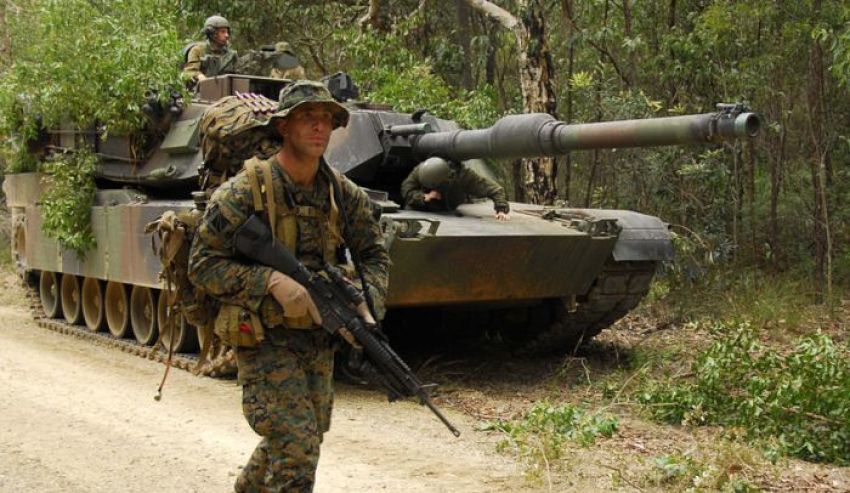The US has responded to survivability and capability concerns about the Abrams platform through the introduction of the SEPv4 suite of upgrades, to be fielded by the early-2020s.
To continue reading the rest of this article, please log in.
Create free account to get unlimited news articles and more!
The continuing advances in Russian and Chinese armoured vehicles and the growing proliferation of highly effective man-portable anti-armour weapons is challenging the once unrivalled supremacy of the M1 Abrams series of main battle tanks (MBT) operated by the US and allies, including Australia. In response, the US has initiated a series of modernisation and upgrade programs.
General Dynamics' existing SEPv3 configuration suite incorporates a range of technological advances, including improved communications, reliability and sustainment enhancements, improved fuel efficiency, and upgraded armour to ensure that the Abrams is capable and relevant on the contemporary battlefield.
The SEPv4 upgrades will ensure that the new variant of Abrams will be designed to be more lethal, faster, lighter, better protected and connected through a variety of technologies, including the incorporation of:
- Improved sensors and optics, including a 360-degree radar, processor and on-board computer, an advanced FLIR optical system and long-wave sensors;
- Enhanced armour and active protection systems (APS) to protect against a range of ordnance, including man-portable rocket propelled grenades (RPG), anti-tank guided missiles (ATGM) and enemy anti-tank rounds; and
- Advanced weapons systems including the Advanced Multi-Purpose 120mm ammunition, which is designed to replace multiple rounds.
Testing is projected to begin in 2021, with the objective to field the modernised SEPv4 variant by the early-to-mid-2020s in order to more effectively respond to the challenges and proliferation of advanced ground-combat vehicles, like the Russian Armata and Chinese Type 99 MBTs.
This renewed focus on modernising the Abrams platform comes following a recent announcement by original equipment manufacturer General Dynamics Land Systems that it had secured a US$714 million deal with the US Army to provide modernisation and upgrades to 174 SEPv3 M1A2 Abrams tanks for the US Army.
The delivery order is part of an Army Requirements Contract signed in December 2017, through which the Army can upgrade up to 435 M1A1 Abrams tanks to the M1A2 SEPv3 configuration. Work on this delivery order will be performed at GDLS locations in Scranton, Pennsylvania, and Tallahassee, Florida, and at the Joint Systems Manufacturing Center in Lima, Ohio – the only operational tank plant in the country.
The Australian Army operates a fleet of 59 M1A1 variant Abrams MBTs with the 1st Armoured Regiment. Australia's Abrams are fitted with advanced composite armour, which provides substantial defence against enemy fire and improvised explosive devices.
Fuel and ammunition reside in separate compartments to protect the crew from the risk of the tank's own ammunition exploding if the tank is damaged. To support the Abrams, the ADF has produced seven M88A2 HERCULES (heavy equipment recovery combat utility lift and evacuation system) armoured recovery vehicles.
The HERCULES is a fully-tracked heavy armoured vehicle that performs hoisting, winching and towing as part of recovery operations and evacuation of heavy tanks and other combat vehicles.
The Abrams is also supported by heavy tank transporters to fulfil its logistics requirements while on operations. A range of simulators have also been procured to assist in training and crew preparedness.
Stephen Kuper
Steve has an extensive career across government, defence industry and advocacy, having previously worked for cabinet ministers at both Federal and State levels.

 Login
Login








